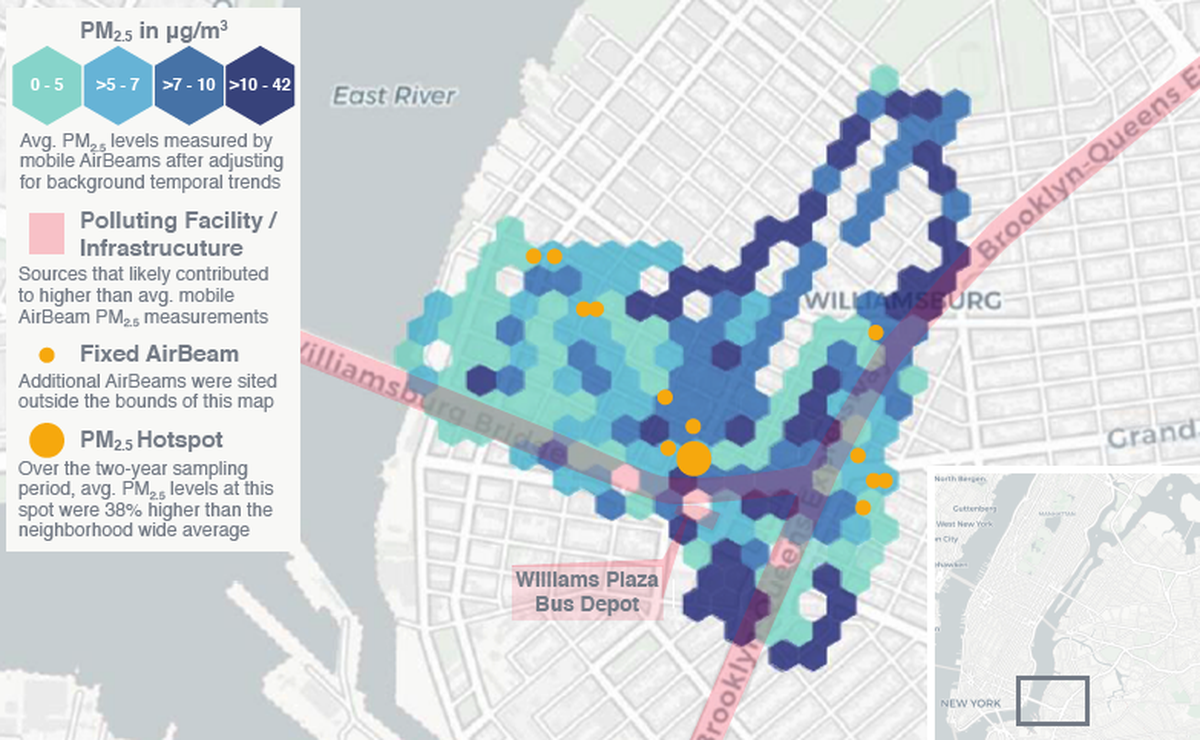
Air pollution levels in New York City can vary dramatically minute-to-minute and block-to-block, however, this variation is not captured by the New York State air monitoring network, which includes just over a dozen stations in the City. A new report details how the New York City Environmental Justice Alliance and their community-based member organizations filled this data gap by measuring pollution levels with AirBeams + AirCasting, discovering hyperlocal air pollution levels in predominantly Black and Brown communities could be up to twenty times higher than expected.
In New York City, historic and contemporary discrimination in access to housing and racist land use planning has resulted in the concentration of noxious facilities - peaker power plants, garbage transfer stations, concrete batch plants, warehouses, and more - in low-income communities of color. By measuring air pollution levels with wearable sensors and connecting the dots between the air they’re breathing and the noxious facilities embedded in their communities, the New York City Environmental Justice Alliance and their community-based member organizations revealed the disproportionate exposures to air pollution their communities face and chart a path towards better air for all New Yorkers with specific policy recommendations that can help clear the air.
To download and read the report click here.